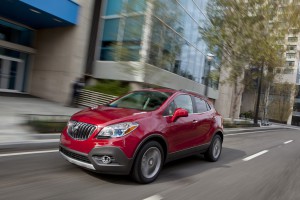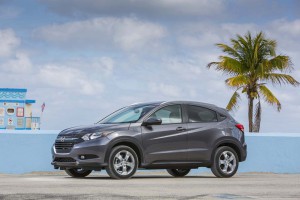
Sales are booming in the U.S. auto industry. They are being led, in part, by small and medium crossover vehicles, like the Buick Encore.
Ever since the end of Great Recession in 2009, the U.S. economy has struggled to regain momentum; however, change may be on the horizon, according to one auto analyst.
John Murphy, the lead automotive analyst for Bank of America Merrill Lynch, told the Automotive Press Association in Detroit that the indicators suggest that the 17.7 million seasonally adjusted annual sales rate in May was another indicator that the car business was very healthy and the annual Car Wars forecast that sales could reach as 20 million units in the U.S. by 2018 is accurate.
“If anything we might be a little on the low side,” he said.
The path down also should be relatively gradual until the next “trough” is reached, which he expects will be in the middle of the next decade. The path the industry on is now is supported by strong prices and stands to benefit companies all along the automotive value chain, such as dealers and suppliers, Murphy said.
Among the factors supporting the industry’s growth is the aging vehicle fleet. The average age of vehicles on the road is expected to go up again this year, Murphy noted. In addition, slow but steady growth in jobs as well as the flow of new products into showrooms should help maintain the industry’s sales number.
(As weather warms, May auto sales sizzle. For more, Click Here.)
Murphy also noted that unlike the sales boom that followed General Motors post-9/11 “Keep America Rolling” campaign, sales are not being heavily subsidized or incentivized by the manufacturers and by extension suppliers. The industry has maintained discipline on the pricing side of the equation, he noted.
(Click Here for details about Japanese automakers gaining U.S. marketshare.)
Other analysts are also impressed with the industry performance this year. Overall, the industry’s performance is quite impressive this year, noted Tom Libby, manager, loyalty solutions and industry analysis, IHS Automotive.
(Google co-founder on the defensive as report of crashes involving self-driving cars hits a dozen. Click Here for the report.)
“While 2015 will be one of the best years in the history of the U.S. industry, in some ways it may be the very best ever,” Libby said. “Not only are new vehicle registration volumes approaching the record levels of the early 2000s, but now registrations and production capacity are much more closely aligned so the industry is much more healthy. In contrast, in the early 2000s the over-capacity situation generated enormous incentives which greatly hurt, and sometimes eliminated, OEM profits.”

